1. Lamprey
2023 Marine Futures Interns Blog Week 14: What scary creatures are lurking around Lincolnshire?
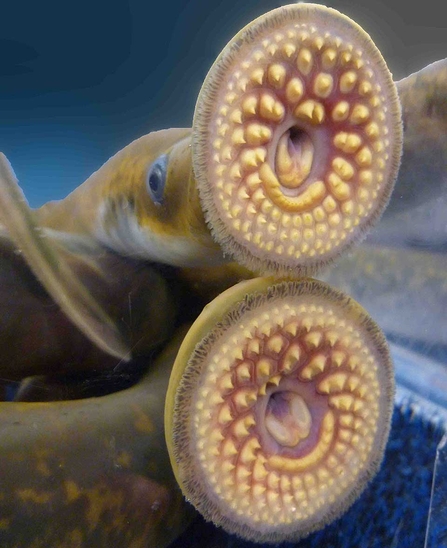
Ted Lawrence/Great Lakes Fishery Commission
Their round, sucker-like disc surrounds the rasping teeth filled mouth of adult lamprey. Lamprey are prehistoric, parasitic fish that detect vibrations in the water and latch onto its prey, sucking blood or feeding on flesh. They can be found in Lincolnshire’s chalk streams, which are unique types of spring-fed rivers that naturally are clear, have little sediment and low nutrient levels. These streams are a precious resource for the Lincolnshire Wolds AONB. There are three species of lamprey in the UK: brook lamprey, river lamprey and sea lamprey. Lamprey are a protected species, and their return to UK waters is a symbol of improved water quality.
2. Raven
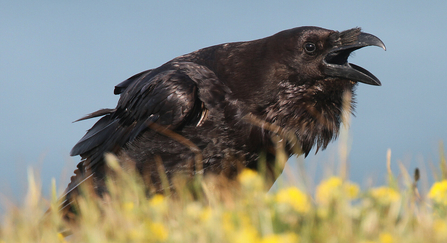
Raven - Andy Karran
You will know the Raven as being the imposing, all-black bird that guards the Tower of London. Steeped in myth and legend, it is believed that if the ravens leave, the City of London will fall. Ravens are massive crows, which can be found in forests and on mountains where it feeds on carrion (dead or putrefying flesh). They nest on cliffs around the coast, on mountains, quarries and in large trees in parkland. Ravens pair for life; males perform breeding displays of posturing, preening and bill caressing from February onwards, and females lay four to six blue-green eggs in a nest of twigs and moss.
3. Goblin's gold
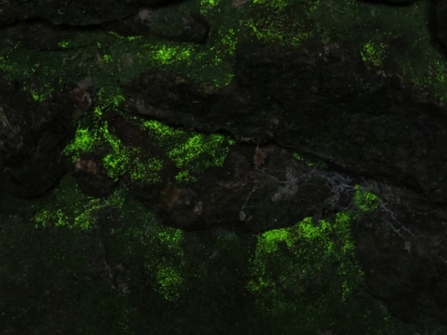
Tom Hibbert
As the light starts to fade, you might spot a sparkle of green on the rocks. Hidden in damp, dingy places, you can find the Goblin’s gold. It is a plant that has evolved to love gloomy, dark and damp places, where others cannot survive. The moss has tiny cells that take the very faint light onto its chloroplasts, and its glow is an effect of this spooky adaption.
4. Dead man's fingers
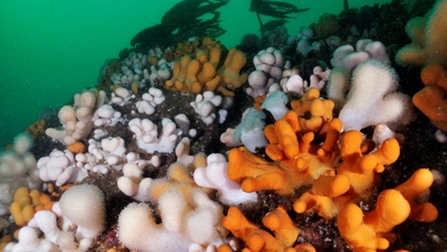
Linda Pitkin
These gross sounding creatures are a type of coral that gets its name from stout, finger-like lobes. Dead man’s fingers are a type of soft coral that is either orange or white. Each coral is actually made of a colony of lots of individuals, and they can be found on all British and Irish coasts. They’re attached to rocks, shells and stones where the otherwise dominant algae that would live on these surfaces are prevented by the lack of light. Sometimes you may even see Dead man’s fingers on some unlucky living crabs and gastropods (snails and slugs). Their depth range is in low water (springs) to 50m in depth. Throughout Autumn, dead man's fingers retract their lobes and look a bit shrunken and sorry for themselves! They're actually preparing themselves for spawning and don't feed at all during this period. Marine life starts to settle on top, often making them look reddish-brown.
5. Wolf Spider
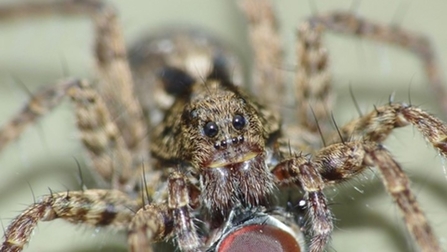
Janet Packham
Leaping on its prey just like a wolf, the Wolf Spider can be found in a wide range of habitats, including the garden. Even though they look scary, spiders are good guys and are beneficial neighbours, helping to manage garden pests. The wolf spider shows various patterns of dark grey, brown and black, and is quite hairy. It’s a medium-sized spider that can often be seen having a nice sunbathe or running across the ground to hunt. A fun fact - Wolf spider young disperse by using silk 'parachutes' to float away on the wind!
~~~~~~~~~~~~~~~~
And to end, an update from us. Sian and I are busily working away to design a Marine Net Gain Pipeline, and create reviews on our independent projects. If you’d like to learn more about our research projects, head on over to week 12’s blog post to learn more! 😊
Jasmine

